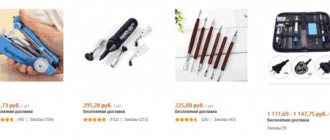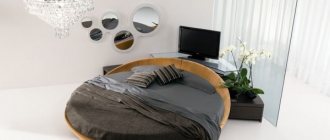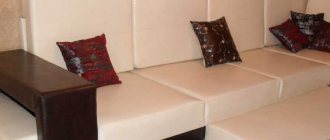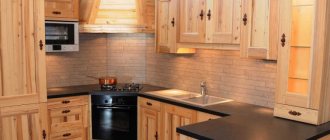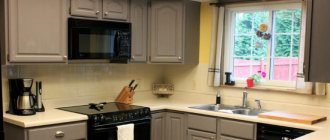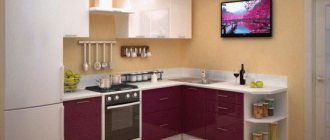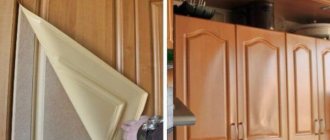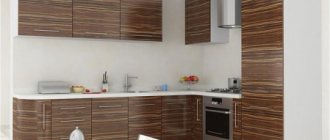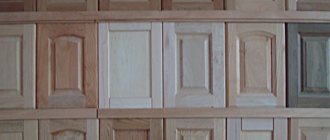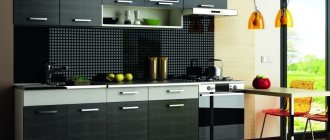27115
Every owner dreams of a cozy room design, but wooden furniture is expensive and difficult to care for. Sets of boards are not always paintable. Furniture facades made of MDF come to the aid of lovers of unusual interiors. This is a great way to display interesting pieces of furniture in your kitchen or room. Manufacturers offer owners to purchase products of different colors and shapes, thanks to which anyone can create the ideal environment at home.
Manufacturing technology
Medium density fiberboards (MDF) are produced from natural wood, depending on the company's reputation, the amount of waste is up to 20%, the rest is industrial wood. In this case, the volume of coniferous species cannot be lower than 70%. Production is carried out using the following technology.
- Grinding. All raw materials are fed into powerful crushers; while the rotor rotates, they are cut and crushed. The output should be wood chips. Subsequently, the raw materials are sent by a belt conveyor to drums for mixing with purchased wood chips.
- Preparing wood chips. It is sifted on sieves to remove fine wood dust, the purified product is supplied for washing (dirt and soil are removed) and cooking. The process takes place in large sealed boilers with superheated steam. Steam pressure is 10 bar, due to high parameters, decomposition is significantly accelerated, the amount of insufficiently processed wood chips is reduced.
- Grinding in a refiner. This unit splits wood chips into a fibrous state; the length varies and depends on the size of the wood chips and the characteristics of the technological process. The properties of the board depend on the length of the fibers; separate standards exist for MDF and HDF boards.
- Blow with dry air and mix with glue. The components are uniformly mixed, and the finished mixture is blown into a long pipe for final drying. The raw material should have a moisture content of 12–15% at the output.
- Separation of fibers from air. For this purpose, cyclones of a centrifugal operating principle are used. Heavy ingredients hit the walls and settle, clean air comes out into a special hole.
- Purification of the mixture. The raw materials should be cleaned of lumps of glue and large solid impurities; their quantity depends on the quality of the raw materials.
- Pre-pressing. The fibers are first fed to the spreading line, the height is leveled, and pre-pressed on a cold press. It is at this stage that the thickness of the MDF boards is established. During cold pressing, the final removal of air occurs; this parameter has a great influence on quality. At the exit from this press, the edges are cut and the specified parameters are controlled.
- Final pressing. The tape is sent to the main press, the process takes place at a temperature of +240°C and under high pressure. With the help of special profiles, the appearance acquires the intended structure.
Pressing
Plate after pressing
Trimming ends
Applying a decorative layer
Preparing for packaging
Packaged products from MDF
Next, the products are cut, weighed and fed to a cooling drum to lower the temperature. The slabs are stored for temporary storage for 2–3 days, during which time the adhesive composition gains maximum strength. At the exit, another quality control is done.
At the final processing stage, the surface of the slabs is ground and cut to specified dimensions. Depending on the purpose of the boards and the requirements for their performance characteristics, they can be sold in sanded form or polyethylene film and veneer are applied to the surface.
Video - Production of MDF and HDF boards
Important. As can be seen from the description of the technological process, MDF boards cannot be classified as environmentally friendly products.
Production involves the use of adhesives based on artificial resins, rather than the mythical natural gluten from wood. During the manufacturing process, special fillers and ingredients can be added, due to which they are given wear resistance, biostability and water resistance. Additives affect the cost; they are on average 1.3 times higher than the price of chipboard. But due to the fairly high strength, it is possible to reduce the thickness of the slabs; in this parameter they exceed chipboard by about 1.8 times.
Preliminary preparation, to the size of the workpieces, using a format cutting machine.
The concept of a format cutting machine.
These machines are designed for piece and batch cutting of wood species and materials such as chipboard, MDF, plywood, fibreboard, HDF, etc.
It is also possible to cut acrylic artificial stone
- When choosing a panel saw, the following parameters must be taken into account:
- longest cut length
- cutting accuracy
- type of saw carriage
- main saw power
- scoring saw power
- machine weight.
Once you have cut your MDF sheet to the size you need, we can proceed to milling it. You can make the internal drawing on a CNC milling machine, since we are considering the production of only facades, you can use any of these CNC milling machines Artmaster 1009, Artmaster 1212, Artmaster 2112, Artmaster 2515, Artmaster 3015, Artmaster 3020.
Before milling your future facade, you need to create a drawing. You can use our programs “ArtSapr” - Design of facades and doors or the “Front” template program, which comes with the machine, with the help of these programs you can quickly create a program for your future facade using templates. Or you can use the AutoCAD program - a two- and three-dimensional computer-aided design and drawing system developed by Autodesk or any other program that is familiar and convenient for you that will allow you to save your drawing in DXF
- (English Drawing eXchange Format) - an open file format for exchanging graphic information between CAD applications.
After that, using the software Control program DeskCNC (ArtMaster), select the following parameters:
- tool path
- tool type
- processing speed
- cutting speed into material
- type of processing
- tool diameter
- type of surface approach
- possibility of additional processing
and create a control program DNC file in the G-code
— conditional naming of the programming language for computer numerical control (CNC) devices.
After the control program has been created, we can fix our workpiece on the working surface of the CNC milling machine and begin milling.
I would like to spend time on 2 more factors, the type of workpiece fastening
and
milling the part with one or more cutters (tools)
.
Type of workpiece fastening.
There are 3 types of workpiece fastening on a CNC milling machine produced by Artel LLC LTD:
- Vacuum table
- Manual clamps
- Vacuum suction cups
Vacuum table - allows the workpiece to be fastened without mechanical devices, creating negative pressure between the table surface and the agility of the workpiece. The vacuum is created by a vacuum pump; the pressure and area of vacuum coverage depend on the power of the pump and its volume. The greater the volume of vacuum and its power, the faster it will create a vacuum; we use a 100 cubic meter vacuum pump from Becker (Germany) for our CNC machines. A vacuum table will easily help you mill either one workpiece or make straight or curved cutting of material, while you will be sure that not a single part, even small ones, will be held on the vacuum table. If you have a backing, you can make a through cut of the workpiece.
Fastening clamps
— are the simplest and cheapest way to secure a workpiece; manual clamps are included with the machine if you have chosen a machine without a vacuum table. Using clamps, you can secure the workpiece in the place you need using either 3 or 4 fastening points.
Vacuum suction cups
— Vacuum suction cups are a cylindrical structure, along the upper rim of which there is a sealing ring on which the workpiece is placed. From the resulting cavity of the suction cup, air is sucked out through a flexible hose using an ejector powered from a network of compressed and filtered air with a pressure of at least 6.0 kg/cm2, controlled by a pressure gauge installed in the compressed air supply system. In this case, the compressed air consumption ranges from 1.8 to 2.5 m3/h. The operation of vacuum suction cups is controlled using a vacuum block placed at the front end of the coordinate table. This block contains: an ejector, a main air supply valve to the ejector and a vacuum distributor for all suction cups.
Types of MDF
The thickness of the slabs ranges from a few millimeters to more than a centimeter, the length and width depend on the technical parameters of the production lines and existing industry standards. Taking into account the finishing of external surfaces, there are several types.
| Slab type | Brief technical specifications |
| Laminated | During production, great quality is given to only one side, then it is covered with a special PVC film with different color shades and patterns. If previously imitation of natural wood was most often used, now photographs, including those using 3D technology, are very popular. The film is not afraid of moisture, has relatively high mechanical resistance parameters, and is made from modified raw materials with additives that increase resistance to hard ultraviolet rays. The surface can be easily washed with both conventional and acid-containing detergents. |
| Veneered | More expensive panels have natural wood veneer glued to the outer surfaces. The thickness of the veneer depends on the purpose and grade of MDF. To protect external surfaces, veneer can be treated with especially durable varnishes. |
| Glossy | Most often used in the furniture industry, their cost falls into the budget category. One side of the slab is smooth, which improves its appearance and allows it to be used without additional layers of topcoat. The glossy surface is impregnated with chemicals that increase the moisture resistance of the slab. |
When choosing, you need to choose a slab whose physical characteristics best meet the actual operating conditions.
Using MDF
The main consumer of slabs is the furniture industry; they are often used for finishing interior spaces for various purposes.
Decorative wall panels
Laminate is made on the basis of MDF, furniture facades are finished with decorative threaded elements.
Furniture facades made of MDF
Another feature of the slabs is that during milling they emit dust, which makes them an excellent material for milling shapes of complex geometry.
3D CNC milling of MDF
Artistic milling of MDF
Installation of facades
Even at the manufacturing stage, certain installation procedures are carried out:
- marking areas with fittings;
- openings for parts;
- loops are attached;
- now the facade is placed in the doorway;
- adjustment of fittings.
You can transform a room at relatively low cost.
Specifications
The classification, definitions and accepted symbols of MDF boards are prescribed in GOST 34026-2016.
Depending on the production technology, wood fiber types can be of two types.
- Wet production method. The most famous among builders and furniture manufacturers, they are distinguished by increased performance characteristics. A detailed description of the technological process is given in this article a little higher.
- Dry production method. By simplifying the technology, the cost is somewhat reduced; synthetic materials containing harmful compounds are used as adhesives. Not recommended for use in residential premises. Foreign inclusions are noticeable on external surfaces, which reduces quality.
Depending on the parameters of physical and mechanical strength, MDF is divided into grades, the grade of each of them is influenced by the quality of the surface. The pressing process can be continuous or batch. In the first case, the material is fed to the line by a continuous belt, cutting to size is performed at the finishing stage. In the second case, prepared raw materials are poured into special molds, and after leveling, the press piston performs reciprocating movements.
MDF facades in PVC film
The technology for producing MDF facades in PVC film involves the use of expensive equipment (membrane-vacuum press, CNC milling machine) and, accordingly, qualified service personnel. The main material, MDF board , is usually 2-2.5 times more expensive than regular laminated chipboard. This leads to a slight increase in the cost of producing MDF facades in PVC film, but they retain their position in the economy class .
On the other hand, the technology for manufacturing MDF facades in PVC film gives complete freedom in choosing color, shape, surface topography, decorative elements and other design delights, which allows the manufacturer to work more comfortably with individual customers. In addition, qualities such as the strength (density) of MDF boards, moisture resistance, and health safety make furniture with MDF facades more attractive to the end consumer.
According to some characteristics, MDF film facades include facades made from AGT panels . They are also based on an MDF board, and the surface is lined with matte or glossy PVC film, or high-gloss acrylic plastic. Unlike facades made by vacuum pressing, the ends of AGT panels after cutting must be covered with edging material.
Classification of slabs according to the characteristics of the front layer
This is a very important parameter of products; consumers choose products for themselves taking into account their specific purpose and operating characteristics. The front surface can be of several types.
- The surface is untreated. The cheapest slabs are recommended for use as secondary or temporary structures. Additionally, the layer can be tinted. The low cost fully corresponds to the same quality.
- There is a finely dispersed mass on the front layer. Due to this, large irregularities are eliminated. The surface can be painted or left in its natural state.
- With increased water resistance. Surfaces can be ordinary or with a finely dispersed layer.
Untreated surface
MDF panels for walls
Safety classification
We have already mentioned that there are no MDF boards that are completely safe for health; during their production, synthetic urea-formaldehyde resins are used in quantities of up to 120 kg/m3 and a hardener of up to 5 kg per cubic meter. All of them release formaldehyde into the air. Each country has its own requirements for the amount of harmful compounds; the permissible parameters are often influenced by the industrial lobby. We have three classes of formaldehyde emission: E0.5, E1, E2. The first ones are the safest, the third ones are prohibited for use in residential premises. But you need to know that physical strength is inversely proportional to the safety class. The more glue, the stronger the board, but the more formaldehyde is released.
Classification according to acceptable use
Taking into account the recommended purpose, the slabs are divided into several categories:
- general use in rooms with humidity not more than 65%, air temperature not less than +20°C;
- for use only indoors without direct contact with water;
- for humid conditions (relative humidity exceeds 85% for several weeks of the year);
- withstands static and dynamic forces;
- fire-resistant and bioresistant.
It must be borne in mind that additional finishing coatings significantly change the factory properties of MDF boards.
Step-by-step instructions for installing an MDF apron
As an example, let's look at the instructions for installing an MDF apron with decorative photo printing. The installation is done in an existing kitchen; there is no need to do any special preparatory work.
Step 1. Bring the stove into the room and remove the packaging materials.
Removing packaging
Removing the packaging film
If the apron was stored in an unheated room in winter, then you need to give it at least a day to acclimatize. During this time, the temperature in the room and on the front side will equalize, and the condensation will evaporate. Do not rush to get to work right away; check the moisture content of the ends of the slab by touch.
Step 2. Place the stove on a flat surface; the dimensions of the table should be approximately equal to its linear parameters. Always remember that manufacturers advertise only the positive aspects of their products. If they claim that MDF is easy to cut, and this is true, then at the same time this means that it has low mechanical strength. If a large area hangs down, it may crack under its own weight. Take the dimensions of the apron and transfer them to the back side of the slab.
Marking along a ruler
Step 3. Using an electric jigsaw or other tool, carefully cut off the excess. You should work very carefully, as a small piece of MDF may break off and the edge will become uneven. Use one hand to support the material at all times. If it’s hard, stop longitudinal cutting, make a transverse cut and break off part of the slab.
Cutting the apron
Step 4. Transfer the locations of the sockets in the kitchen area to the apron. This is done in several stages.
- Remove the protective decorative covers from the sockets. Pay attention to the margin with which they overlap electrical boxes; this data will help you navigate with maximum tolerances.
Measurements of socket boxes - Make marks on the surface of the sheet. If you are working on the front side, then you should use only children's markers. They are made with water and are easily washed off; if you work on the reverse, then the locations of the sockets should be marked in mirror images.
Transferring markings to the apron
Step 5: Cut holes. First you should drill, the diameter of the drill should allow the jigsaw to enter them.
Drilling holes
When working, it is advisable to place paper or cardboard under the jigsaw table, this will prevent damage to the front side of the apron.
Sawing with a jigsaw
Holes for sockets and switch
Step 6. Apply liquid nails to the wall, do not skimp on material. It is necessary to ensure strong adhesion.
Application of adhesive composition
Spot application
Step 7: Lean the slab down and press it firmly with your hands.
The plate is pressed tightly against the wall
Do not leave gaps; the material must adhere to the entire surface. If the wall is uneven, then you should increase the amount of glue; do not be afraid that there will be too much of it and it will remain liquid. The composition hardens not when moisture evaporates, but due to chemical reactions. The catalyst is moisture in the air. This means that, despite the thickness, the glue will harden and will firmly hold the apron.
Step 8. Insert all the elements of the sockets into place; they will additionally secure the apron.
Installation of sockets
Attaching decorative trims
Completion of installation of switches and sockets
The rod is fixed
MDF apron
The technology for installing these kitchen design elements is so simple that almost all beginners can do it.
Quality and selection criteria
The first step in choosing MDF panels is to determine the required dimensions. Sometimes you can immediately select elements from the parts presented in the store, but more often than not, each part of a furniture set is ordered separately at the factory. Fiberboards are manufactured in accordance with GOST 20400-80. The document allows for minor deviations:
- Under the film there may be almost invisible marks up to 8 mm long;
- Metallic film may contain microspots and small streaks. This is due to its properties;
- The texture direction may be skewed by up to 5 mm;
- The texture of the wood board is allowed to appear under the film;
- Small chips may be located on the surface, repaired with a material of a suitable color;
- The presence of technological holes on the reverse side is allowed. Their size cannot exceed 6 mm, and should be no more than 3 by 0.3 square meters.
List of unacceptable defects:
- Any film wrinkles;
- The presence of foreign particles underneath;
- Bubbles;
- Scratches. Their length cannot exceed 50 mm;
- Dents;
- Milling defects (chips, ribbing, waves on the edge);
- Any peeling of the coating or backing;
- Not completely cut off foam;
- Sliding of the coating;
- Grinding defects: rubbed parts, scratches;
- Folds at the corners of complexly designed products;
- Differences in shades on different parts of the furniture;
- Glue residues located anywhere on the part;
- Whitening film on corners and edges.
To select the ideal panels, you need to view each copy before purchasing and, if necessary, order a reissue.

